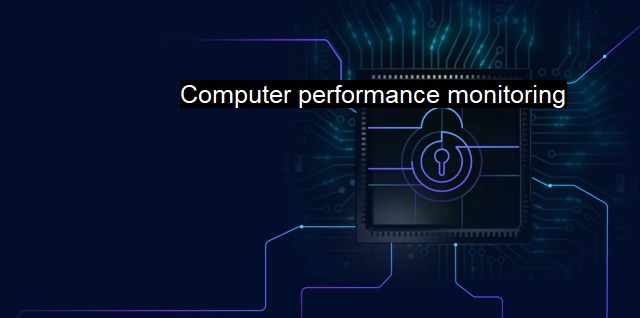What is Computer performance monitoring?
The Crucial Role of Computer Performance Monitoring in Cybersecurity and Antivirus Solutions
Computer performance monitoring is a vast domain that involves observing and comparing the efficiency of a given computer system, with a special focus on its resources, namely CPU utilization, availability and usage of memory, disk input/output, and network connectivity, among other aspects. It entails gathering data about these resources and determining whether the performance metrics are satisfactory. This cyber system evaluation doesn't just happen in the backdrop; it plays a crucial role in the effective functioning of the systems, which consequently impacts the smooth running of many organizations as well as individuals' workflows.In today's digital era, computer performance monitoring has taken on a significant new angle - cybersecurity, which ensures the protection of systems from vulnerabilities and threats that could affect the data stored within them. This added layer balances performance monitoring with predicting potential future risks and intrusions which, left unaddressed, could severely compromise system operations. It, thus, becomes instrumental in safeguarding not just the efficiency of the system, but the integrity, confidentiality, and availability of information in it too.
Computer performance monitoring has now become synonymous with proactive prevention measures where specific stats around system operations, user activities, and data are mined in real-time for possible inconsistencies or red flags. Equipped with these alarming indicators, administrators can undertake immediate steps to eliminate these intrusions or vulnerabilities before they convert into full-blown disasters.
In view of the constant threats and attacks to hog system resources illegitimately, performance monitoring tools have evolved to provide more than just an insight into a computer's performance metrics. They now actively look to improve these metrics by resolving underlying issues while simultaneously building a formidable defense against unwanted infiltrations. As a result, they integrate seamlessly with antivirus systems that are programmed to scan, detect, and delete potentially harmful software that could compromise system performance.
Antivirus software, in fact, constitutes an essential piece in the larger puzzle of the computer performance monitoring stratagem. It quarantines and removes any detected malwares, and also acts as a firewall against any potential threats thereby directly contributing to the performance of the system. This synergistic cooperation between performance monitoring and antivirus systems ensures that the computer resources stay at their peak operational efficiency and are shielded against any interruptions or infiltrations.
Computer performance monitoring can also be used to optimize the performance of antivirus programs themselves. By analyzing data on memory, CPU, and disk use, administrators can detect any anomalies in the antivirus program operations. Simultaneously, these function-like benchmarks help them fine-tune the antivirus configuration for ideal performance.
This proactive approach of monitoring becomes especially vital in the vast corporate ecosystem, where hundreds, if not thousands, of systems simultaneously come under the imminent threat from viruses, spyware, adware, ransomware, and other malware forms. But with effective performance monitoring and the backing of strong antivirus software, these risks are mitigated to ensure continuous and seamless operations.
Cybersecurity, antivirus systems, and computer performance monitoring harmoniously converge to maintain and shield the storage, processing, and flow of sensitive information in the vast digital landscape. With threats and vulnerabilities on the rise, this integral relationship is expected only to strengthen in the future, as systems become smarter and adversaries become faster. Hence, computer performance monitoring turns into a cyber-night-watchman mode, underlining the importance of cybersecurity hygiene and reinforcing the indispensability of antivirus measures by being a holistic insight-generation engine and a shield.

Computer performance monitoring FAQs
What is computer performance monitoring?
Computer performance monitoring is a process of observing and measuring the performance of a computer. It involves tracking the usage of resources such as CPU, memory, disk, and network to identify any bottlenecks or issues that may affect the system's overall performance.Why is computer performance monitoring important for cybersecurity?
Computer performance monitoring is essential for cybersecurity as it helps in identifying any unusual activity or behavior on the system. By monitoring the performance metrics, security professionals can detect any malicious activities such as malware infections, hacking attempts, or unauthorized access to the system.What are the benefits of computer performance monitoring?
Computer performance monitoring offers several benefits, including identifying and resolving performance issues, detecting security threats, improving system efficiency and uptime, and optimizing resource utilization. By monitoring the system's performance, organizations can ensure that their systems are running smoothly and minimize the risk of downtime or cyber attacks.What are some best practices for computer performance monitoring?
Some best practices for computer performance monitoring include defining clear performance metrics, setting up alerts for abnormal behavior, establishing a baseline for normal behavior, regularly reviewing performance data, and leveraging automated tools for monitoring and analysis. It's also important to involve all stakeholders in the monitoring process, including IT staff, security professionals, and management.| | A | | | B | | | C | | | D | | | E | | | F | | | G | | | H | | | I | | | J | | | K | | | L | | | M | |
| | N | | | O | | | P | | | Q | | | R | | | S | | | T | | | U | | | V | | | W | | | X | | | Y | | | Z | |
| | 1 | | | 2 | | | 3 | | | 4 | | | 7 | | | 8 | | |||||||